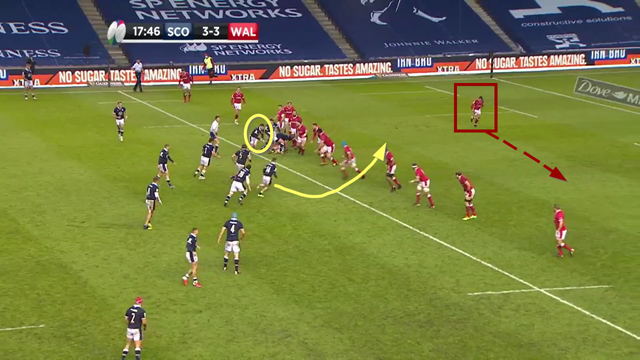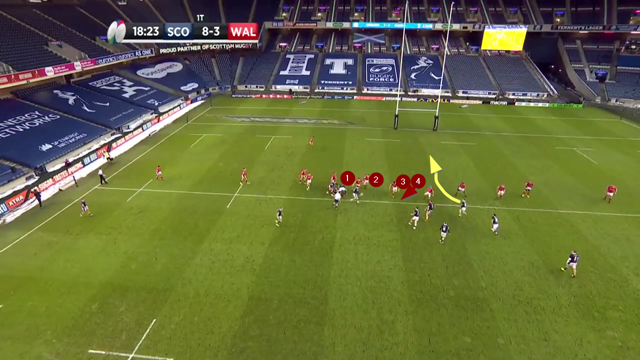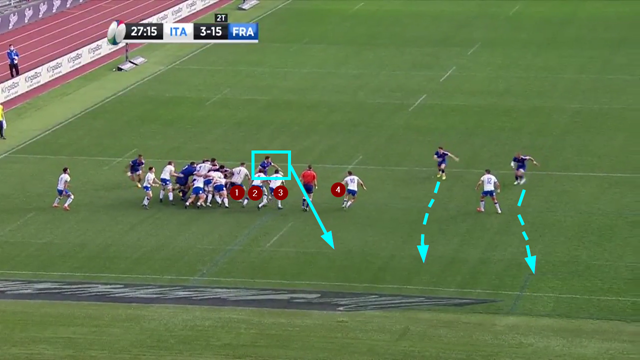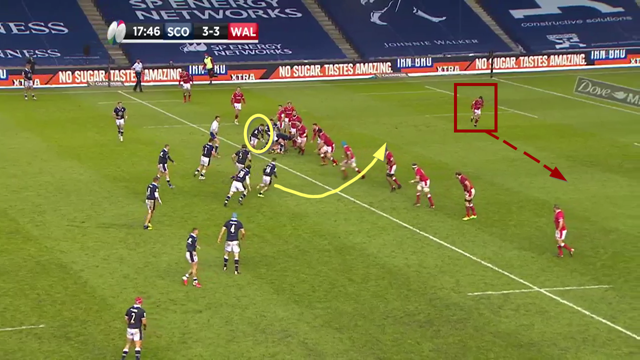Red Zone Kicking adds to No 9 Role
The complexion of the kicking game is changing. In recent times, both the quantity and the variety of kicking is on the up. In the current Six Nations tournament, after two rounds the average number of kicks per game is an imposing 63.
That means one kick every one minute and 15 seconds that the ball is in play. The peak game was the first-round clash between England and Scotland, which featured 78 kicks. Naturally, Scotland won because they kicked more than England (43 times).
The tempo of attacking play has increased during the past two seasons. The five-second ‘use it’ advisory to referees has been applied to all contact situations – at lineout drives, from scrums and rucks, and most notably from box exit kicks off 9.
The revised ruck interpretations introduced in 2020 demanded fewer movements on the ground by the tackled player after he/she is held, and quicker release by the tackler(s) on defence. That has tended to result in a faster ruck tempo than before.
That quicker ruck-speed is a double-edged sword. It can be a great advantage for the attacking team to run against a defence still struggling to reorganize, but the offence can also run out of structure more quickly, with less time available for players to regroup into their optimal positions for the next wave of attack.
There is therefore, a premium placed on the kicking game to be permanently available as an option for the side in possession of the ball. Moreover, that kicking game is tending to shrink around the one player who can be guaranteed to be present at any ruck: the attacking scrum-half.
This is particularly true in the red zone – the last 30 metres or so to the opposition goal-line. The defence will generally move more players into the front line, with a shorter backfield space to defend as they begin to back up against their own posts.
In round two of the Six Nations, there were two excellent examples of how an attacking team can use attacking kicks off 9 to their advantage when this situation arises.
Here is Scotland’s first try of their match against Wales:
The Scotland attack is out of shape after a long break by their second row Johnny Gray, with two tight forwards providing width out to the right touchline. The main attacker available on that side is number 14 Darcy Graham, who is no more than seven metres away from the ruck:

There is also an advantage for the attack, because the sole Welsh backfield defender (full-back Leigh Halfpenny) has been drawn over to the narrow side of the ruck.
In this scenario the burden of creating attacking play falls on the scrum-half, Scotland’s Ali Price. Price takes three lateral steps away from the ruck in order to draw the eyes of the first four Wales defenders towards him, and open a channel for Graham to run through:

With Halfpenny on the wrong side of the breakdown and committed to running a flat line across field, Graham is in just the right space to collect Prices’ short chip over the top:
The same principles were at work in a score from the first-round match between France and Italy:
This scenario arises after a drive from lineout. With play deep in the Italy 22, the Azzurri full-back is defending as the last man on the wide side of the field – he only comes into shot on the far post as the ball is about to be grounded for a try by France centre Gael Fickou!
With all the defenders packed in the line, it is the responsibility of the French scrum-half Antoine Dupont to create a channel for Fickou to run through. He does it by applying the same technique as Price, taking three lateral steps away from the ruck to pin the eyes of the first four defenders:

All the eyes of those defenders are looking at Dupont as he goes to kick, and two wide running channels have been levered open on either side of the Italy number 12.
Summary
As the game develops in the near future, with more players in the defensive line and a quicker attacking ruck tempo, it is likely that greater attacking responsibility will fall on the attacking number 9 to make play – especially as it approaches the opposition goal-line. A creative short kicking game will become an important part of his/her arsenal.












.jpg)

.jpg)







